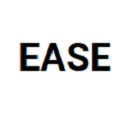The easiness, speed, accuracy, security are the four main indicators of information quality that may be of concern to people for accessing information in a public institution dashboard system. To find out whether the data displayed on the system is easily understood by the users, an empirical evaluation study may indispensable to be performed. Evaluating user experience is one way to know whether a system is in accordance with user needs or not, whether related to data, interfaces or system performance. This study assessed user experiences based on the product pyramid and its development process in the case of a public dashboard system in a public institution in Indonesia. The empirical experiment was conducted with about 15 participants using a scenario that were deliberately designed and then gave answers to the single ease question (SEQ) and the system usability scale (SUS). The results show that SEQ measurement results obtained value of almost 5.7 which indicates that the application measurement results have an easy level. The SUS results demonstrate that the system was in the acceptable category with the value of around 81.3. Although findings of the study might not contribute theoretically, the findings may demonstrate a practical consideration for the stakeholders, in terms of the next system development stage.
翻译:用户经验评估经验是了解一个系统是否符合用户需要的一种方法,无论是与数据、接口或系统性能有关;这项研究评估了印度尼西亚公共机构公共仪表板系统的产品金字塔及其开发过程,根据产品金字塔及其开发过程评估了用户的经验;在印度尼西亚公共机构公共仪表板系统的情况下,对大约15名参与者进行了经验实验,使用一种经过精心设计的情景,然后对单一易用问题(SEQ)和系统可用度尺度(SUS)作了回答;结果显示,SEQ测量结果获得了几乎5.7的值,表明应用计量结果具有容易的程度;SUS结果显示,该系统属于可接受的类别,价值约为81。3 虽然研究结果在理论上可能没有帮助,但研究结果可能表明在下一个系统开发阶段对利益攸关方进行实际考虑。




